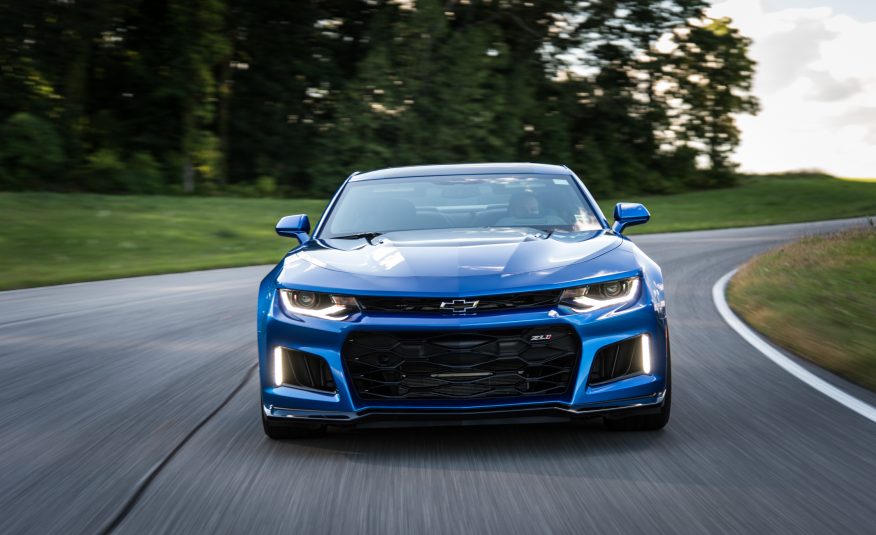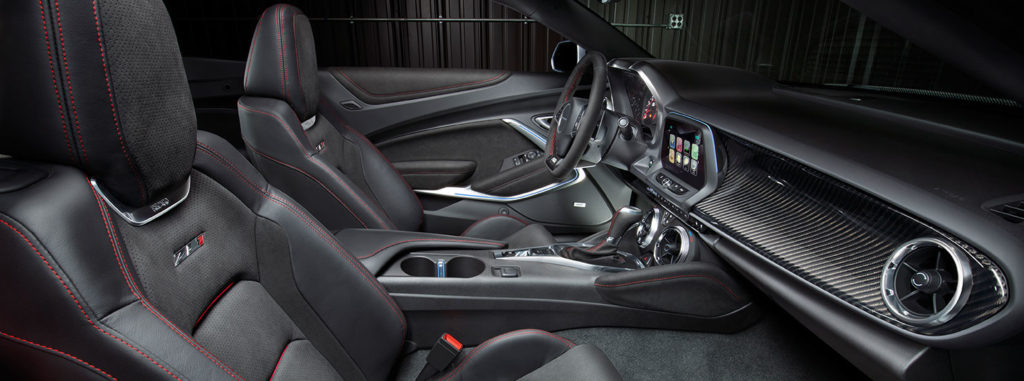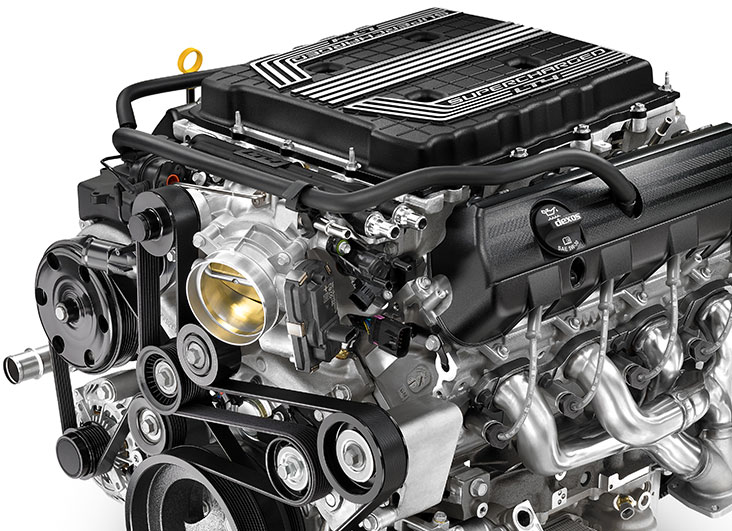The All New Camaro ZL1: Mind over Muscle
Surprisingly, a lack of packaging space demanded the change. But what matters is this: 650 horsepower at 6400 rpm and 650 pound-feet of torque at 3600 rpm. It’s all managed, aurally, by a dual-mode exhaust, which is now electronically controlled rather than vacuum actuated as it was on the last Camaro ZL1. Chevy offers two transmissions here, including a high-torque version of the six-speed Tremec TR6060 that’s available in the Camaro SS. A tailored gearset allows the manual-transmission-equipped ZL1 to hit 60 mph in first gear, while both fifth and sixth are overdrive gears. At 0.54:1, sixth gear is a true fuel-economy cog, though the 3.73 final-drive is still low enough to serve up shovel-to-the-spleen holeshots.
But the 10-speed automatic, co-developed with Ford, is the one that’s so hotly anticipated and the one we experienced from the passenger’s seat. Even from that chair, it’s clear that it will be the go-to gearbox if minimising lap times is a priority. Chevy engineers compared the 10-speed’s shift times with those of the dual-clutch units in the 991 Porsche 911 Carrera S and the McLaren MP4-12C, which admittedly are not the newest iterations of those cars.
The differences, though small, fall convincingly in favour of the Chevy. Here the 10-speed uses a ZL1-specific torque converter, clutch components, bearings, software, and controllers. Its 0.64:1 10th gear is numerically lower than what the transmission will offer in other applications. Ten-speed–equipped ZL1 coupes will have a 2.85:1 final-drive ratio.

Convertibles will be 2.77:1 and won’t get the eLSD. Most striking is the gearbox’s ability to keep the LT4 engine almost indefinitely in the most potent portion of its rev range. When it’s working hard, the 10-speed is all nervous energy, ripping through tightly spaced gears with unrelenting pace. The resultant thrust and sound are gleefully rewarding.
Enough so that Link says the automatic is the component of the car that makes him most proud. “It just never falls off,” he says. “Even at the higher speeds we see on the ’Ring [the Nürburgring Nordschleife, where GM partially developed the ZL1], there’s always a building sensation to this car’s acceleration.”
Four drive modes influencing all the car’s manners remain snow/ice, tour, sport, and track. It’s likely, though, that the 10-speed has crossed the don’t-bother threshold when it comes to do-it-yourself paddle shifting. Even Link admits that it’s hard to know whether to go down three gears or four in certain scenarios. But, let’s face it, the days of shifting automatics yourself stopped being rewarding back when they reached seven gears. Using drive, as Link did on our ride-along, frees up brainpower for steering and braking. If you want to shift yourself, get the six-speed.

Chevy hadn’t released the ZL1’s official ’Ring lap time as of our deadline. But it did say that the new car is more than 11 seconds quicker than the previous ZL1’s 7:41.27, which makes it a 7:30 or better. We’ve seen data logs confirming that it’s ten mph faster than the old ZL1 (call it about 182 mph) going into Tiergarten, the fastest section of the track. A mid to low 7:20 seems possible.
Forged 10-inch-wide front and 11-inch-wide rear wheels wear 285/30R-20 and 305/30R-20 rubber, respectively. Goodyear, once again, is the ZL1’s tire supplier, and it worked with engineers through many variants of its Eagle F1 Supercar tire before arriving at the final compound and construction, which is called G:3.

Carbon-ceramic brake rotors, like those offered on the 2015 Z/28, aren’t available. This is both a cost-control measure and a practical one, as the iron brakes meet GM’s performance targets. The ZL1’s two-piece 15.4-inch iron front rotors are clamped by fixed, six-piston Brembo callipers.
Even with hefty brakes, the Alpha platform nets the ZL1 a 220-pound weight savings over the last model; at about 3950 pounds when equipped with the 10-speed automatic, though, it’s certainly no featherweight. Still, it’s quicker. Chevy says 10-speed–equipped coupes should hit 60 in 3.5 seconds and hammer through the quarter-mile in 11.4 seconds at 127 mph.

Customizable launch control that allows adjustable engine speed and wheel-slip between 5 and 15 per cent is standard and can be had with either transmission. And, keeping pace with Ford, the ZL1 now offers line-lock, a feature that clamps the front brakes but leaves the rear free for epic burnouts. It’s so buried in the instrument-cluster menus that even Captain Liability himself couldn’t accidentally activate it.




Love the coverage.
We are glad that you do. Please stay tuned!